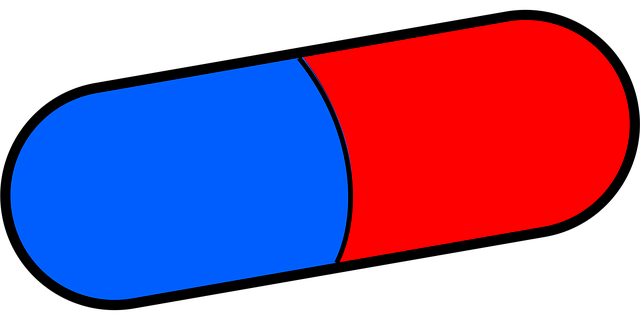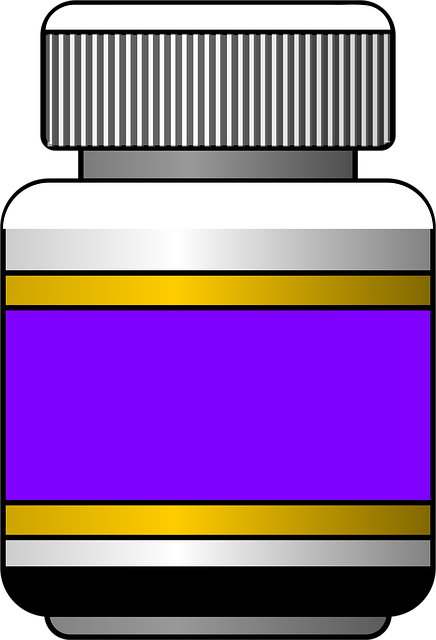GLP-1 drugs are a powerful class of medications transforming diabetes management by targeting specific receptors in the pancreas, brain, and gut. They enhance insulin secretion and inhibit glucagon release, improving glycemic control. These drugs also slow gastric emptying, increase satiety signals to the brain, and stimulate weight loss through various off-target effects. While generally well-tolerated, GLP-1 drugs may cause gastrointestinal symptoms and require close monitoring for rare but serious side effects like hypoglycemia and pancreatitis. Beyond blood sugar regulation, ongoing research explores their potential in cardiovascular diseases and neuroprotection. Patient selection is crucial, with considerations including lifestyle commitment, understanding side effects, and regular follow-ups to ensure optimal dosing and glycemic management.
“GLP-1 receptor agonists, a class of drugs that mimic the effects of the gut hormone GLP-1, have emerged as powerful tools in managing type 2 diabetes. This article delves into the intricate mechanism of action behind these innovative therapies. From their pivotal role in blood sugar regulation to unexpected benefits like enhanced gut motility and weight management, we explore how GLP-1 drugs interact with receptors, suppress glucagon secretion, and offer a holistic approach to patient care. Understanding these mechanisms is key to optimizing treatment strategies.”
Understanding GLP-1 Receptors: Their Role in Blood Sugar Regulation

GLP-1 receptors, or glucagon-like peptide-1 receptors, play a pivotal role in blood sugar regulation within the human body. These receptors are primarily located in key areas involved in metabolism, including the pancreas, brain, and gut. When activated by GLP-1 drugs, these receptors initiate a cascade of physiological responses that help control blood glucose levels.
One of their primary functions is enhancing insulin secretion in a glucose-dependent manner, meaning they stimulate insulin release when blood sugar is high, thereby facilitating glucose uptake by cells and reducing bloodstream glucose. Additionally, GLP-1 receptors inhibit glucagon secretion, a hormone that raises blood sugar. This dual action contributes significantly to improving glycemic control, making GLP-1 drugs valuable in the management of type 2 diabetes.
How GLP-1 Drugs Interact with These Receptors

GLP-1 drugs interact with GLP-1 receptors, which are located in various tissues throughout the body, primarily in the gut and pancreas. When activated, these receptors initiate a cascade of cellular responses that play a crucial role in glucose homeostasis. GLP-1 drugs mimic the effects of naturally occurring GLP-1 peptides by binding to these receptors, leading to enhanced insulin secretion in a glucose-dependent manner. This action helps lower blood sugar levels, making them effective in the treatment of type 2 diabetes.
Beyond their effect on insulin release, GLP-1 receptor agonists also slow gastric emptying, reducing postprandial glucose spikes. They further enhance satiety signals to the brain, leading to decreased food intake and weight loss—a multifaceted approach that contributes to improved metabolic control.
The Impact of GLP-1 Receptor Agonism on Insulin Secretion

GLP-1 receptor agonism plays a pivotal role in enhancing insulin secretion, a key mechanism underlying their therapeutic efficacy in managing diabetes. When GLP-1 drugs bind to their receptors on beta cells, they stimulate a cascade of cellular events leading to increased insulin production and release into the bloodstream. This effect is particularly notable during meals, where the surge in amino acids, especially glutamine, activates GLP-1 receptor signaling, thereby boosting insulin secretion in a glucose-dependent manner.
The enhanced insulin secretion mediated by GLP-1 agonists improves glycemic control, making them valuable additions to diabetes therapy. This action not only aids in lowering blood sugar levels but also helps maintain a more stable glucose profile throughout the day. By targeting the GLP-1 receptor, these drugs offer a novel approach to treating diabetes, distinct from traditional insulin or sulfonylurea therapies, and have been shown to provide significant benefits for patients with type 2 diabetes.
Inhibiting Glucagon Secretion: A Key Mechanism for Lowering Blood Sugar

GLP-1 receptor agonists work their magic by mimicking the effects of the natural hormone GLP-1, which plays a crucial role in regulating blood sugar levels. One of their key mechanisms involves inhibiting the secretion of glucagon from the pancreas. Glucagon is a hormone that stimulates glucose production and release from the liver, thereby increasing blood sugar levels. By blocking this secretion, GLP-1 drugs effectively lower blood sugar, providing a powerful tool for managing diabetes.
This inhibition is particularly significant during meals when blood sugar rises. GLP-1 agonists suppress glucagon release in a glucose-dependent manner, meaning they only kick in when blood sugar is high, making them highly targeted and efficient at reducing postprandial glucose spikes. This mechanism not only helps lower blood sugar but also reduces the risk of hypoglycemia, a common side effect of other diabetes treatments that don’t have this specific targeting system.
Enhancing Gut Motility: An Unconventional Benefit of GLP-1 Drugs

GLP-1 receptor agonists, a class of drugs designed to mimic the effects of the gut hormone GLP-1, have revolutionized diabetes treatment. One of their lesser-known but significant benefits is their ability to enhance gut motility. This effect is particularly important as it contributes to improving overall digestive health and can aid in managing conditions like constipation.
GLP-1 drugs stimulate the movement of food through the digestive tract by increasing smooth muscle contractions, a process known as peristalsis. This action helps prevent delayed gastric emptying and promotes regular bowel movements. Moreover, these drugs can stimulate the release of fluids into the intestines, softening stools and making them easier to pass, thereby alleviating constipation, a common issue for people with diabetes.
Weight Management and GLP-1: Beyond Blood Sugar Control

GLP-1 receptor agonists, or GLP-1 drugs, have gained significant attention for their dual role in managing both blood sugar levels and weight. While their primary function is to stimulate insulin release and inhibit glucagon secretion in response to rising blood glucose, these drugs also exert off-target effects that contribute to weight management.
Beyond their metabolic actions, GLP-1 drugs increase feelings of satiety, leading to reduced food intake and appetite suppression. This effect is mediated through interactions with areas of the brain involved in regulating hunger and satisfaction. Additionally, they enhance energy expenditure by promoting lipolysis in adipose tissue and increasing insulin sensitivity in skeletal muscle, further contributing to weight loss and maintenance.
Common Side Effects of GLP-1 Receptor Agonists

GLP-1 receptor agonists, while primarily effective in managing blood sugar levels, are not without their side effects. Some of the most common experiences reported by users include nausea, vomiting, and diarrhea. These gastrointestinal symptoms are often among the first signs of treatment with GLP-1 drugs and tend to be more prevalent during the initial weeks of therapy. They result from the agonist’s stimulation of both glucose-dependent insulin secretion and gut L cells, leading to increased satiety signals and potential changes in gastric emptying.
Fortunately, these side effects usually wane over time as the body adjusts to the new medication. Other less common but still significant side effects include injection site reactions, low blood sugar (hypoglycemia), and pancreatitis. Patients on GLP-1 drugs should closely monitor their blood sugar levels and report any unusual symptoms promptly to their healthcare providers. Regular communication is essential in managing these potential adverse reactions effectively.
Emerging Uses and Future Perspectives in GLP-1 Drug Therapy

GLP-1 receptor agonists have primarily been used for the treatment of type 2 diabetes, where they improve glycemic control. However, emerging research points to a broader range of potential applications for GLP-1 drugs. Beyond their current use as hypoglycemic agents, these agonists are being explored for their anti-inflammatory properties, which could make them valuable in managing conditions such as cardiovascular diseases and metabolic syndromes.
Future perspectives in GLP-1 drug therapy include the investigation of their role in neuroprotection and potential benefits in neurodegenerative disorders. Additionally, ongoing studies aim to optimize delivery methods, such as long-acting formulations, to enhance patient convenience and adherence. These advancements hold promise for transforming GLP-1 drugs into a versatile class of therapeutics with significant public health impact.
Patient Selection and Considerations for GLP-1 Receptor Agony Treatment

Patient selection is a key aspect when considering GLP-1 receptor agonist treatment. These drugs, known as GLP-1 drugs, are primarily indicated for individuals with type 2 diabetes who require additional glycemic control. Patients should have inadequate blood sugar control despite optimal diet and exercise, or those unable to tolerate other anti-diabetic medications. It’s important to evaluate each patient’s medical history, current medications, and potential contraindications before initiation.
Several considerations come into play when opting for GLP-1 drugs. These include assessing the patient’s willingness to commit to daily injections, understanding their lifestyle, and discussing possible side effects like nausea or vomiting. Additionally, monitoring for adverse reactions and providing appropriate support is essential during treatment. Regular follow-ups ensure optimal dosing and management of glycemic targets.
